How Tos
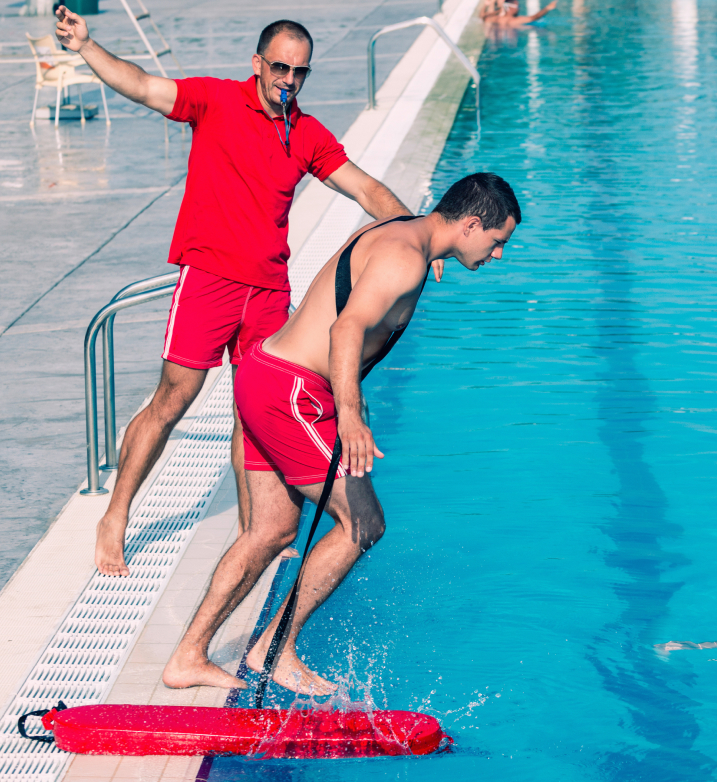
Practical Guides and How-Tos
This section is your guide to taking action and making waves in your community. Explore practical, step-by-step instructions and expert tips on topics that matter—like how to educate your community about water safety, promote diversity and inclusion, and support careers in aquatics. Learn how to create inclusive aquatic spaces, advocate for water safety legislation, choose the right aquatics program, get involved in competitive aquatic sports, and access and share vital safety resources. Whether you're a beginner or a leader, these guides are built to empower you.
Featured Blogs
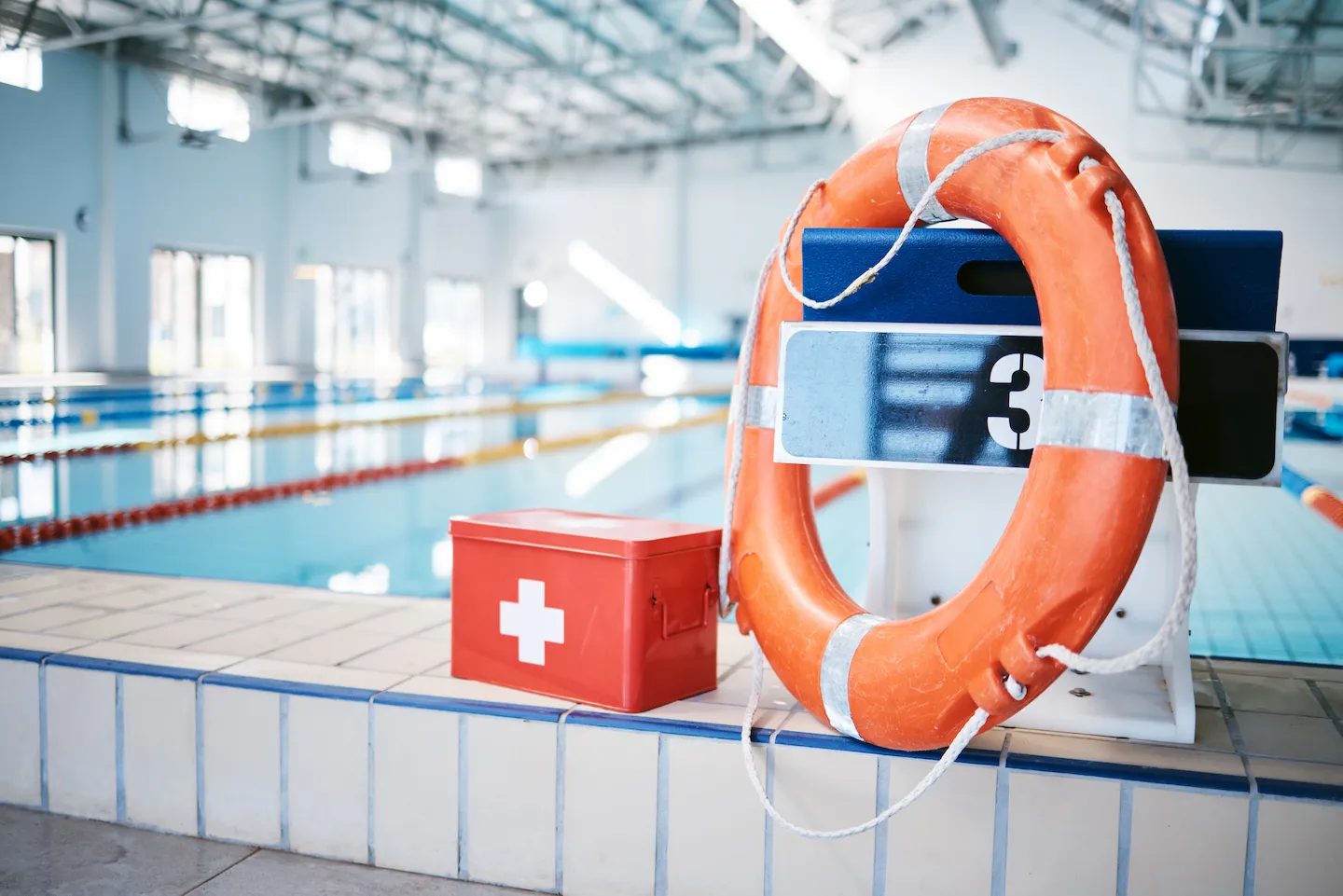
Water safety is a critical issue. It's a matter of life and death, yet it's often overlooked.
Access to water safety resources can make a significant difference. It can prevent accidents, save lives, and foster a love for aquatic activities. However, not everyone has equal access to these resources. Sociopolitical factors, cultural contexts, and historical disparities create barriers that prevent some from enjoying the benefits of aquatic opportunities.
This article offers a clear, inclusive guide on how to access and share water safety resources. Whether you're an aquatic sports director, education policy advisor, or a parent, this guide equips you to promote aquatic safety and advocate for fair access.
Let’s dive in and explore the resources together.
Water safety education is essential for all ages. It teaches life-saving skills, builds confidence, and fosters enjoyment of aquatic environments. While swimming can be fun, it carries inherent risks. Through proper education, we reduce these risks and support healthier, safer communities.
Water safety must reflect the needs of all communities. For effective engagement:
Examples of tailored resources:
These resources ensure that no one is left behind.
Leadership in aquatic settings must promote inclusion. Directors and coordinators should:
These efforts create welcoming environments that reflect the community’s diversity.
Access to swimming is a right, not a privilege. Advocacy strategies include:
Every action helps dismantle the systemic inequities in aquatic opportunities.
Collaboration is key. Work with:
Together, these partnerships can expand the reach and impact of water safety education.
Our Resource Page hosts a variety of materials, optimized for different platforms and audience needs. The categories include:
All resources are web-accessible and mobile-friendly, with clear icons and categories for intuitive browsing.
Follow these steps to use the Resource Page effectively:
Need help? A support icon is available on every page.
Maximize the impact of water safety materials by sharing them strategically:
These strategies make it easier for people to receive and use critical safety info.
Promoting water safety is about saving lives—and changing them. Your role, whether as a parent, educator, or community leader, matters deeply.
By using and sharing these resources, you help build a future where everyone—regardless of background—can enjoy the benefits of water safely. The ripple effect starts with you.
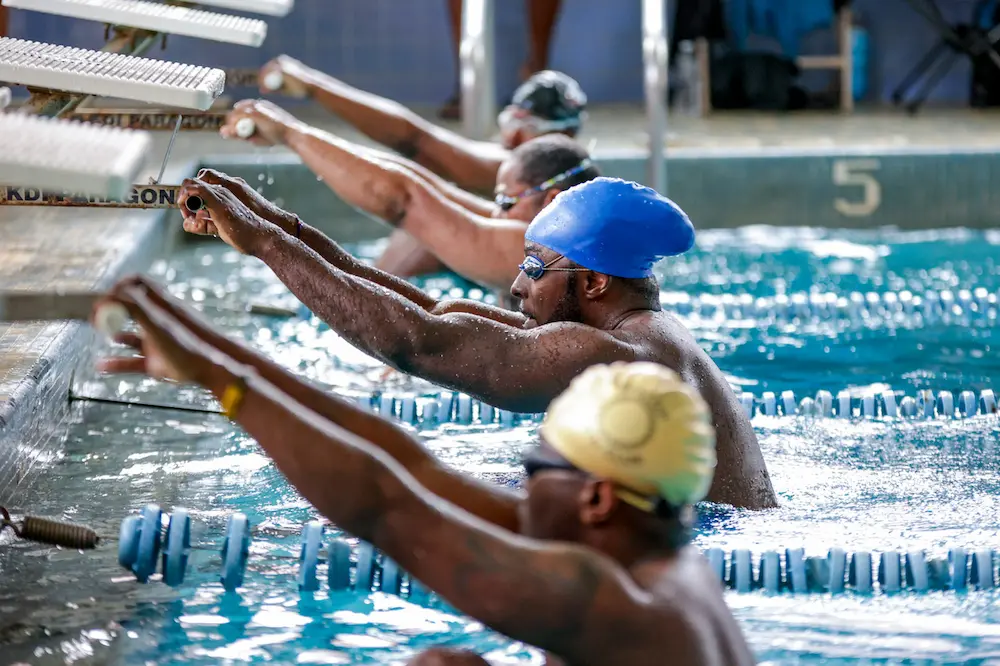
Competitive aquatic sports are more than just a way to stay fit—they’re a gateway to personal growth, mental strength, and community. Yet, access isn’t always equal. Historical, social, and economic barriers often stand in the way of underrepresented individuals. This guide is designed to break down those barriers and make aquatic sports accessible to everyone—regardless of background or experience.
Whether you're just learning to swim or aiming for elite competition, this is your roadmap to success in the world of aquatic athletics.
Aquatic sports are diverse and dynamic. They include:
Each sport emphasizes different skills and has its own competition structure, ranging from local club meets to international events like the Olympics. Starting young is common, but it’s never too late to dive in.
To compete successfully, athletes need physical conditioning, mental focus, and consistent practice. Key steps include:
Be patient—progress comes with consistent effort and support from family, mentors, and peers.
Once training is underway, the next step is entering competitions. Here’s how:
Expect structured schedules, official rules, and a supportive network of coaches and volunteers to guide the experience.
Here are authoritative resources to explore competitive aquatic sports further:
Each site includes training resources, event calendars, and tools for athletes and families.
We envision a future where competitive aquatic sports are accessible, equitable, and empowering. By addressing historical injustices and creating inclusive programs, we open the door for every athlete to thrive.
Whether you’re a parent, coach, or aspiring swimmer, your role matters. Let’s build a culture where everyone has the chance to jump in and rise to their full potential.
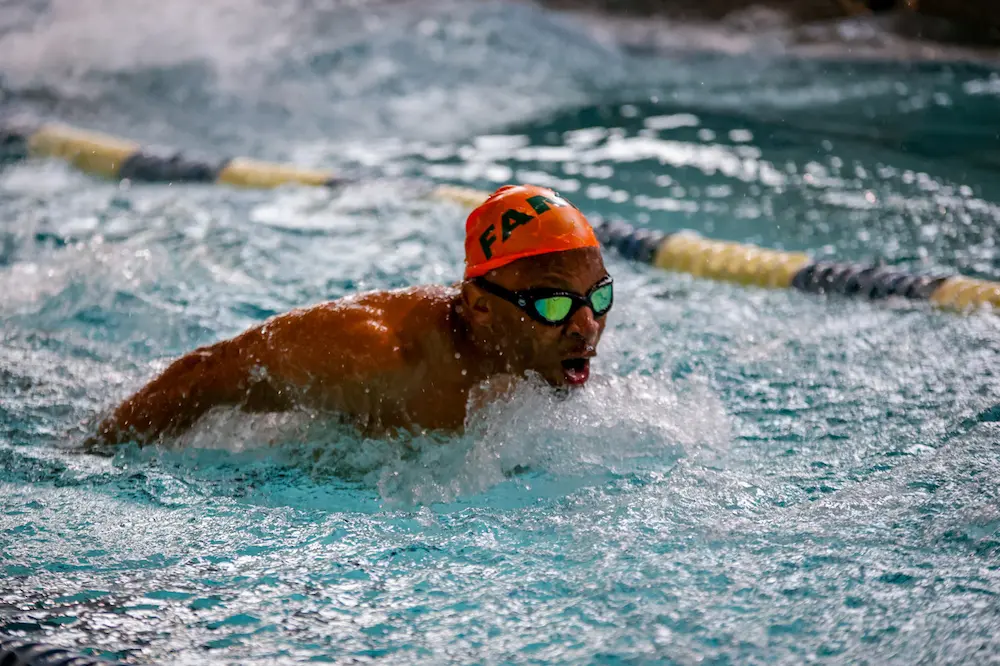
Engaging in an aquatics program can be a rewarding experience, whether you're looking to build confidence in the water, improve fitness, or even train for competition. Selecting the right program depends on your individual needs, goals, and preferences. This guide will help you navigate the various options available, evaluate program quality, and ensure that your choice aligns with your lifestyle.
Aquatics programs vary widely, catering to different skill levels, interests, and objectives. Below are some of the most common types:
Understanding these options will help you determine which program best fits your needs and interests.
Before selecting a program, it’s important to clarify what you hope to achieve. Consider the following factors:
Identifying your primary objectives will help you choose a program that aligns with your interests and long-term aspirations.
Not all aquatics programs are created equal. To ensure a positive experience, consider the following aspects when evaluating a program:
Taking these factors into account will help you choose a high-quality program that meets your needs.
To make the most of your aquatics program, it should fit well within your lifestyle. Consider these practical aspects:
By considering these factors, you can select a program that seamlessly integrates into your routine.
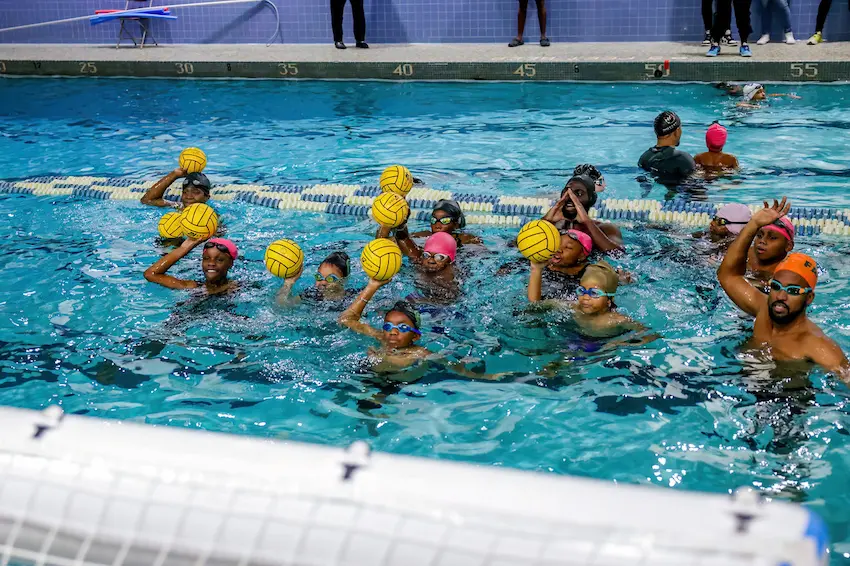
Water safety is more than swimming lessons—it's a public health imperative. Communities across the country face disparities in access to aquatic safety education and resources, contributing to disproportionately high drowning rates, particularly in marginalized populations. Legislative advocacy provides a powerful avenue to address these disparities, ensuring equitable, community-wide access to safe aquatic environments.
This guide walks you through the steps of advocating for water safety legislation—from understanding how laws are made to mobilizing community action and engaging lawmakers effectively.
Before initiating any advocacy efforts, it's crucial to understand how legislation works at the local and state levels. Typically, a bill begins as a proposal from a legislator or advocacy group. It is then introduced to a legislative body, where it is assigned to a committee for study. If the committee approves it, the bill moves forward to debates, amendments, and votes.
Water safety legislation often focuses on requirements for swim education in schools, lifeguard certification standards, public pool safety protocols, or funding for community water safety programs. Advocates must understand who the decision-makers are—local city council members, state legislators, or regulatory agencies—and what stages their proposals must pass through.
Engaging early, providing testimony during hearings, and remaining involved during implementation are all crucial. By understanding the legislative path, advocates can strategically insert themselves into the process to push for change at the right moments.
Grassroots movements gain strength through collective action. Building a coalition involves bringing together like-minded individuals and organizations that support water safety reform. This includes schools, swim clubs, public health departments, first responders, and nonprofit organizations.
Start by identifying allies already active in water safety education or community wellness. Reach out to parent groups, school boards, and community health advocates. Host introductory meetings to align on goals and roles, and assign responsibilities for outreach, media relations, and direct lobbying.
A united front presents a stronger, more credible voice to lawmakers. It also allows you to pool resources, diversify your message, and build momentum faster. Most importantly, coalitions help reflect the needs and voices of the broader community—especially those who have historically lacked access to safe aquatic environments.
Lawmakers respond to clear, passionate, and data-driven messages. When approaching legislators, personalize your outreach: highlight how water safety—or its absence—impacts their constituents.
Schedule meetings with your representatives and come prepared with:
Keep your message concise and actionable. Avoid technical jargon and focus on the tangible benefits of the proposed legislation—lives saved, improved health outcomes, and reduced emergency response costs. Offer to be a resource throughout the legislative process and follow up regularly to maintain momentum.
Remember, advocacy is a marathon. Building trust and rapport with legislators ensures sustained support for both the current initiative and future reforms.
For legislation to succeed, it must be backed by an informed and engaged public. Raising awareness creates pressure for change and strengthens your position when meeting with lawmakers.
Use a multi-channel approach:
Educational efforts should emphasize that drowning is preventable and that equitable access to water safety resources is a matter of social justice. Empower the community with knowledge, and equip them to join your advocacy efforts.
In 2022, the city of Riverbend faced a crisis: three child drownings in a single summer. A group of concerned parents, educators, and public health advocates launched the Water Works Campaign, aimed at making swim education mandatory in local schools and funding lifeguard training.
The coalition quickly mobilized community members and gathered over 3,000 petition signatures. They engaged the media, shared stories from affected families, and used local drowning statistics to illustrate the urgency. Their message resonated with city council members, who introduced a water safety bill within months.
Despite initial pushback over funding, the coalition worked with budget officials to reallocate existing public health grants. The legislation passed in early 2023, mandating swim education for all third graders and establishing new lifeguard programs at public pools.
Within one year, Riverbend saw a 40% increase in swim proficiency and zero youth drownings. The Water Works Campaign became a model for community-led legislative advocacy.
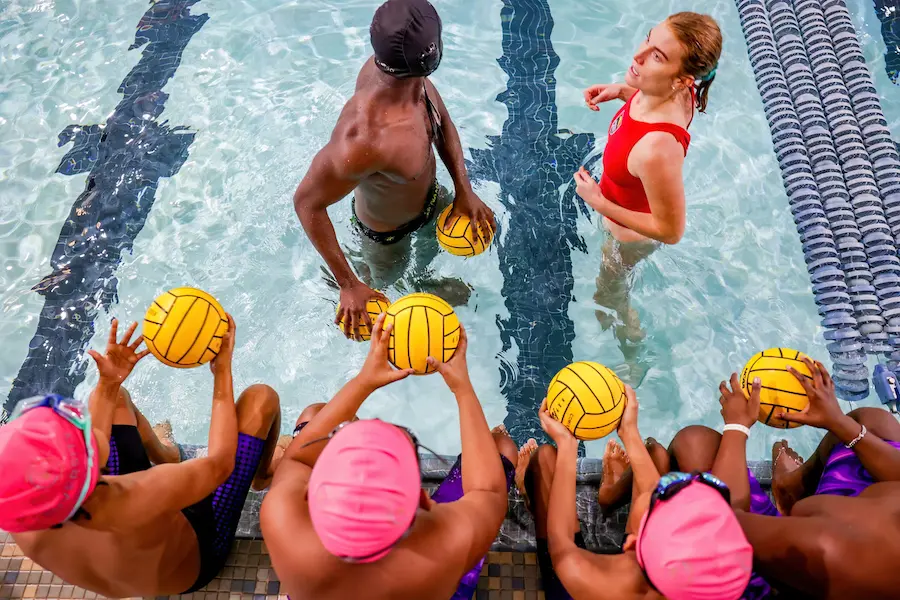
Inclusive aquatics communities are essential in the effort to prevent drowning and promote well-being. They reflect a commitment to making water activities accessible to all individuals, regardless of background, ability, or socioeconomic status.
Historically, access to aquatics and water safety programs has been uneven due to political, cultural, and resource-driven barriers. This article outlines these disparities and presents practical, inclusive strategies for aquatic sports directors, education policy advisors, and parents to help shape more equitable aquatics environments.
Together, we can redefine swimming as a sport—and life skill—for everyone, promoting health, safety, and social inclusion.
Inclusivity in aquatics ensures that people of all ages, identities, and abilities can enjoy the benefits of swimming. More than just recreation, swimming promotes cardiovascular health, mental resilience, and essential safety.
Creating inclusive environments means addressing and removing physical, economic, and cultural barriers. By doing so, we enhance community connection, foster belonging, and enable diverse participation that enriches the aquatic experience for all.
Access to aquatics has historically been limited for many due to segregation, discriminatory practices, and long-standing inequities. Recognizing this context is essential.
Programs that reflect local cultures and experiences help foster trust and participation. Inclusive aquatics begins by honoring diverse histories and building bridges through awareness, education, and culturally responsive programming.
Policy and funding decisions often shape who gets access to swimming facilities. Budget cuts, location disparities, and lack of political will can disproportionately affect marginalized communities.
To counter this, leaders must advocate for inclusive policies and targeted investments. Public-private partnerships, equity-focused funding models, and grassroots advocacy are essential tools in expanding access and building inclusive aquatics communities.
Swimming is a powerful tool for improving public health. It boosts physical fitness, supports mental well-being, and builds lifelong habits of physical activity.
Community pools also serve as vital social spaces. When swimming is accessible, it enhances cohesion, promotes safety, and contributes to overall community resilience. Prioritizing swimming access in public health planning ensures broader, lasting impact.
Inclusive aquatics must provide for individuals with disabilities through adaptive programs that offer tailored instruction and support.
From sensory-friendly sessions to one-on-one swim coaching, these activities ensure equitable access and a richer, more inclusive aquatic culture. Adaptive aquatics embodies the belief that everyone deserves the chance to enjoy and benefit from water-based activities.
Aquatic sports directors play a key role in shaping welcoming programs. Inclusive programming means offering a range of swim classes—group, individual, adaptive, cultural—and adjusting teaching methods for diverse learning styles.
Staff should receive ongoing training in cultural humility, disability inclusion, and trauma-informed practices. Programs should reflect community diversity and be co-created with local input.
Local partnerships with schools, nonprofits, and disability organizations can extend reach and relevance, while multi-language materials and diverse instructors help reflect the community’s identity.
Infrastructure is foundational to inclusivity. Physical spaces must be accessible to participants with mobility, sensory, or cognitive differences.
Key features include:
Web accessibility also matters: facility websites should follow WCAG standards, ensuring that people with visual or auditory impairments can find and access program information online.
Effective community engagement builds trust and increases participation. Outreach should go beyond marketing—create two-way conversations.
Strategies include:
Engaged communities are more likely to support, participate in, and sustain inclusive aquatic programs.
Ongoing education is vital for sustaining inclusive aquatic communities. This includes:
Educational efforts should also emphasize allyship, listening, and humility—core values in building inclusive spaces.
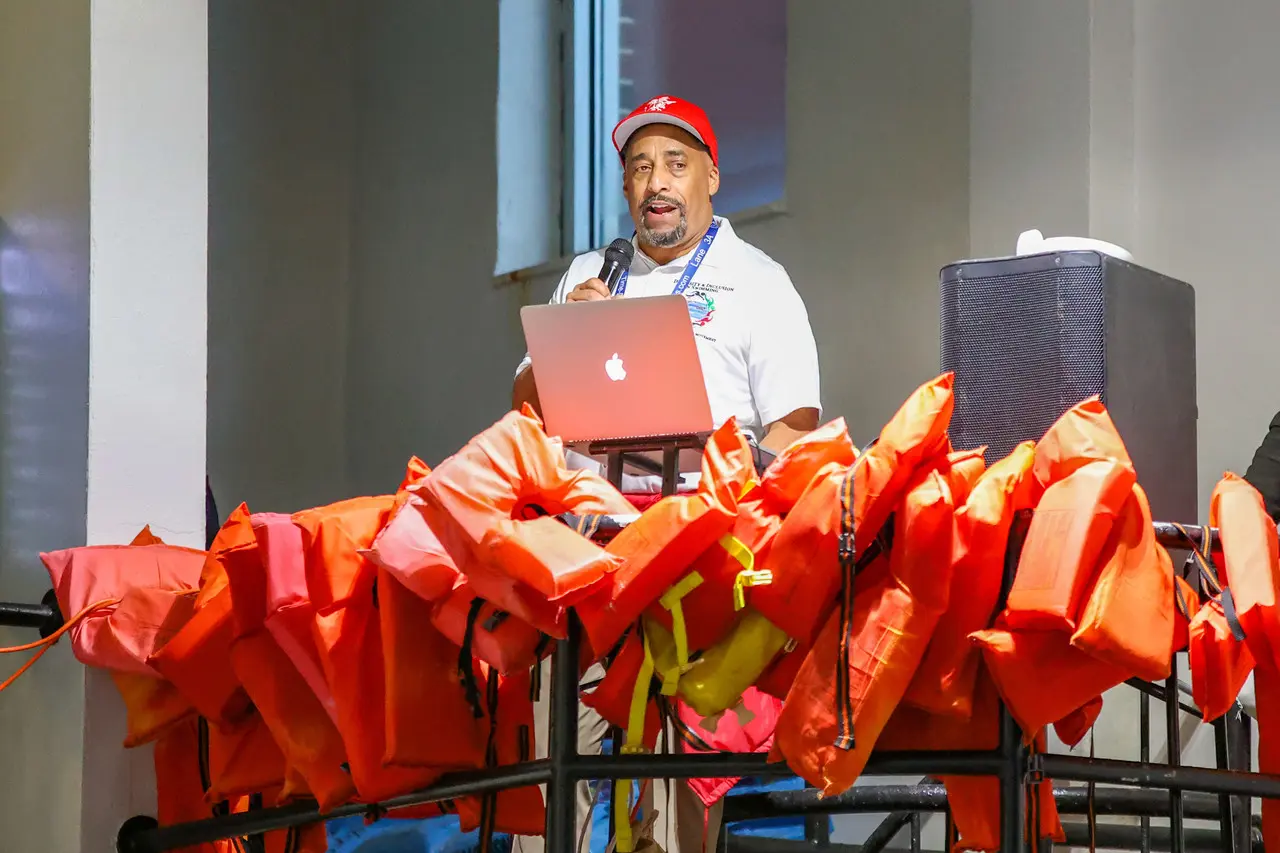
Aquatics offers a wide range of fulfilling career opportunities that go beyond recreation—they play a critical role in advancing public safety, community health, and social equity. From lifeguarding and swim instruction to aquatic research and medical care, careers in aquatics have the power to transform lives and communities.
However, to fully unlock the potential of aquatic careers, we must adopt a comprehensive approach—one that recognizes the sociopolitical challenges, builds inclusive pathways, and fosters leadership from underrepresented groups.
Access to swimming and aquatic sports has long been shaped by systemic inequities. Public policies, segregation, and economic disparities have historically limited access to pools, lessons, and aquatic programs—especially for communities of color and low-income families.
This history contributes to current underrepresentation in aquatic professions. A lack of access means fewer role models, fewer certifications, and fewer opportunities to envision aquatic work as a viable career. Supporting aquatic careers, therefore, begins with understanding and addressing these deeper structural and cultural challenges.
One of the most common entry points into the aquatic workforce is becoming a lifeguard. Lifeguarding fosters critical skills in leadership, responsibility, and emergency response—making it a launchpad to multiple professions.
After gaining experience, lifeguards can become certified instructors, training others and taking on leadership roles within aquatic organizations.
LGITs certify new instructors and play a key role in shaping safety standards regionally.
This leadership pipeline ensures career advancement while also improving safety and training standards across communities.
Aquatic experience—especially lifeguarding, instruction, or coaching—can be a stepping stone to several exciting and impactful careers.
Roles include:
These professionals not only teach swimming but also empower individuals with life-saving skills.
Lifeguards often transition into:
These professionals can specialize in aquatic therapy, pediatric care, or drowning prevention.
Aquatic workers can pursue:
Aquatic professionals with leadership potential can grow into:
Equitable access to education and certifications is foundational. Unfortunately, the cost of lifeguard training or lack of nearby facilities often excludes those most in need of opportunity.
Non-profits are uniquely positioned to bring aquatic opportunities to communities that are often left out of traditional programming. These organizations can provide local, culturally relevant swim and dive programs, mentorship, and scholarship support.
Leadership diversity is critical to creating a truly inclusive aquatic workforce. When youth see leaders who share their background or experiences, they’re more likely to view those roles as attainable.
Supporting aquatic careers is about more than job creation—it’s about building pathways to empowerment, bridging racial and economic gaps, and ensuring water safety for all.
To succeed, we must:
By nurturing these pathways, we create a future where aquatic professions reflect the rich diversity of the communities they serve—fostering safety, health, and opportunity in and out of the water.
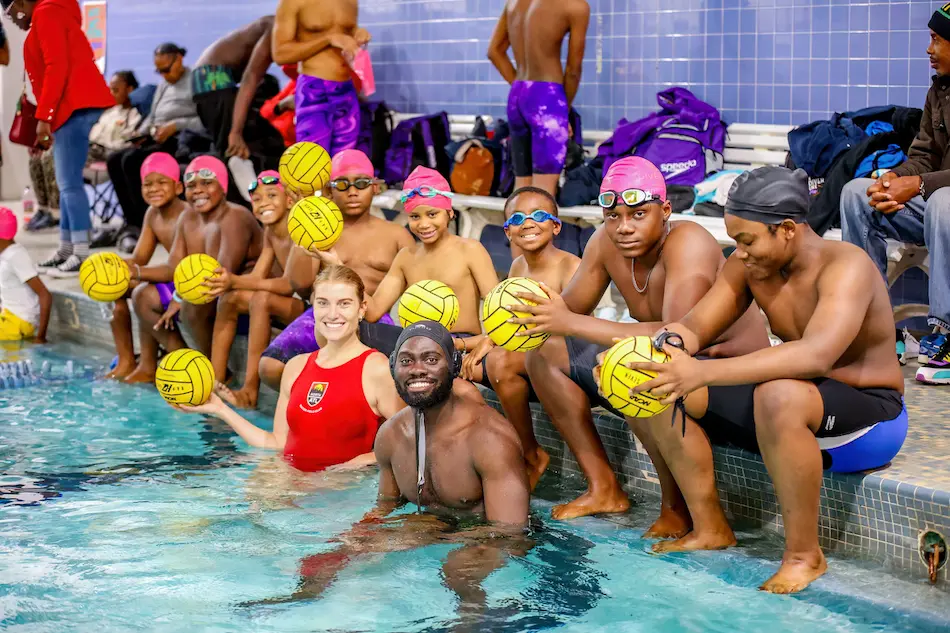
Diversity, equity, inclusion, and accessibility (DEIA) are more than just buzzwords. They are essential strategies for any organization seeking to thrive in today's multicultural society and to building thriving communities in aquatic environments. For too long, systemic barriers—including historical segregation, underfunding of public resources, and cultural exclusion—have limited access to swimming and aquatic sports for marginalized groups.
In the realm of aquatic sports and education, these concepts take on a unique significance. They are the keys to unlocking equitable access to opportunities that have historically been limited for certain groups. Aquatic spaces are more than recreational assets—they are social equalizers and economic engines, capable of uniting diverse communities, improving public health, and fostering resilience. However, disparities remain, especially for people of color, individuals with disabilities, and those from lower-income backgrounds.
This guide brings together data from Diversity In Aquatics Staff and Researchers have contributed to reports like Pool Horizon and National Water Safety Action Plan on DEI best practices, and inclusive programming strategies to help organizations cultivate welcoming and adaptive aquatic environments for all.
This article aims to shed light on the importance of diversity and inclusion within aquatic organizations. It delves into the sociopolitical factors that have led to disparities in access to aquatic opportunities.
We will explore the historical context of segregation and discrimination in swimming and aquatic sports. We will also discuss the impact of socioeconomic status on access to swimming lessons and aquatic facilities for underrepresented groups.
The article talks about promoting diversity and inclusion in water environments. It focuses on cultural understanding, staff training, community involvement, and policy support. The article offers practical tools for organizations to create fair and welcoming spaces.
Let's dive in.
Diversity and inclusion work together to create fair opportunities in water activities. They focus on recognizing and valuing people's many backgrounds.
In aquatic sports, diversity means accepting differences among participants. This includes race, ethnicity, gender, age, and ability.
Inclusion makes sure everyone can take part in water training programs. It involves creating a space where all feel valued and supported.
Finding this balance is important for removing barriers that have limited access in the past. These barriers often come from long-standing social and political issues.
To genuinely understand diversity and inclusion, we must consider:
Addressing these elements can lead to transformative change. By doing so, aquatic programs can become more accessible and inviting to all, promoting not just participation but thriving communities.
The current state of aquatic access is influenced by many social and political factors. Historical policies and inequalities have played a big role.
Land use rules and funding have often favored some communities over others. This affects where facilities are built.
Also, the way resources are shared often shows these inequalities. Communities with less money may not have public pools or safe swimming areas.
Cultural views and family history also affect how people participate in aquatic activities. Misinformation and lack of exposure can make some communities hesitant.
Understanding these factors is important to fix the existing gaps. Organizations should push for policies that improve access and promote inclusivity.
The history of segregation in aquatic sports is a painful yet crucial part of understanding current disparities. During the era of enforced segregation, public swimming pools were often off-limits to people of color.
These practices left long-lasting imprints on communities. Restrictions on access to water-related activities impacted generational swimming skills and comfort levels around water.
In many cases, pools for people of color were not well maintained. This created a gap in access to good swimming areas. Discrimination was not only about physical access; it also excluded people from swimming culture.
This exclusion stopped a diverse group from competing in aquatic sports. Today, these past issues show us why we need diversity and inclusion. By recognizing and fixing these past wrongs, we can create fairer swimming opportunities for future generations.
Cultural competence is very important for creating inclusive aquatic environments. It means understanding and respecting the different cultural backgrounds of participants.
This competence is more than just being aware. It involves actively including diverse perspectives in daily practices and policies.
Cultural competence helps people engage in aquatic programs. It respects different views on water activities. This approach fosters inclusivity and boosts participation. Everyone can enjoy these programs more.
Developing cultural competence among staff starts with training and education. Employees need ongoing chances to learn about different cultures and viewpoints.
Training should include topics like communication styles, cultural traditions, and how culture affects swimming comfort. This knowledge helps staff interact better with others.
Also, creating a space for staff to share their cultural experiences improves understanding and empathy. Open dialogue encourages reflection and growth in cultural competence.
Giving staff these tools helps them create more welcoming aquatic spaces. As a result, participants feel more respected and understood. This leads to greater inclusion and fairness in aquatic programs.
Creating inclusive practices in aquatic programs needs careful planning and action. The main focus should be on accessibility and respect for everyone.
First, look at the current environment to find gaps in inclusion. Check who is participating and who might be missing. Get feedback from different groups to identify specific challenges.
Next, set clear goals to improve diversity and inclusivity. Create benchmarks to measure progress effectively.
Creating inclusive practices means changing how we provide access to facilities and programs. This can include offering lessons at different times to fit various schedules or giving financial help.
A focus on inclusivity also means ensuring safety and comfort for everyone involved. This includes having safe facilities and treating all cultures and abilities with respect.
Think about the unique needs of different groups, like age, gender, and mobility. Adjust programs to meet these different needs.
Implementing inclusive practices can be guided by these key steps:
Fostering inclusivity requires continuous effort and dedication. By embedding inclusive practices into everyday operations, aquatic programs can become more welcoming and equitable spaces.
Inclusion training is important for building a supportive and understanding environment. It gives staff the skills to work well with diverse groups.
Good training should include cultural awareness, unconscious bias, and inclusive communication. This helps coaches and staff see and address their biases.
Training should also focus on real-life situations coaches may face. Role-playing exercises allow staff to practice responding to different scenarios in an inclusive way.
Inclusion training helps coaches create a positive environment for everyone. When staff feel ready, they can confidently support people from all backgrounds.
Overcoming language barriers is important for good communication in different aquatic programs. Clear communication builds trust and understanding.
One way to help is by providing signs and materials in multiple languages. This makes sure that important information is available to non-native speakers.
Hiring bilingual staff and providing language training can enhance communication in aquatic programs. Visual aids and simple instructions further break down barriers, promoting inclusivity and safety for all participants. Creativity and commitment are essential for effective solutions.
Community engagement is pivotal in fostering equity and inclusion in aquatic opportunities. Working closely with the community aids in understanding and addressing specific needs.
Connect with local leaders and involve community members through events. Create an inclusive strategy by checking resources and including diverse voices.
Consider these critical steps to enhance community engagement:
Community engagement must be a continuous process. When aquatic programs are developed in collaboration with the community, they are more relevant and accessible.
Building partnerships with schools and community organizations can significantly increase access to aquatic opportunities. Schools often serve as community hubs, providing ideal collaboration venues.
Working with schools and community groups can improve swimming programs and water safety education. This helps students learn important skills through clear communication and defined roles.
These alliances can enhance program reach and effectiveness. Through these partnerships, aquatic initiatives can have a lasting impact on the community.
Parents and guardians are important in promoting inclusive swimming opportunities. They can support the need for diverse and fair programs.
Encourage parents to get involved in swimming activities through open talks and workshops on diversity and inclusion.
Getting parents involved in planning programs helps create inclusivity and support. This improves access to swimming opportunities for all children.
To nurture diversity, it is important to measure the success of your initiatives. But how can you measure impact and ensure long-term success?
Start by setting clear goals. Numbers like participation rates are helpful. But personal feedback is also important for understanding experiences in the program.
Ongoing feedback and shared success stories create a sustainable, inclusive environment that meets community needs.
Setting clear goals is the first step in tracking your progress. Goals should match the organization's mission and the community's needs.
Use SMART criteria: Specific, Measurable, Achievable, Relevant, and Time-bound. This helps make sure goals are realistic and reachable.
Regularly check your progress against these goals. Tools like surveys, interviews, and performance metrics can give useful insights into your diversity programs.
Look at results not just in numbers but also in how inclusive they are and how the community feels. These checks help find areas to improve and celebrate successes.
Inclusive aquatic programs do more than teach swimming. They build community, break down barriers, and promote understanding.
By using diversity and inclusion strategies, organizations can create spaces that respect and celebrate everyone. This is important for lasting social bonds and community health.
Fair aquatic programs can inspire change beyond the pool. They create a strong foundation for future generations. This helps them lead with kindness and openness. It also expands the idea of community.
Organizations notice the benefits of better teamwork, more participation, and greater community involvement. Because of this, they become more committed to these important values. Each effort helps create a larger shift towards inclusivity and fairness.
Acknowledging accomplishments, no matter the scale, energizes organizations and communities. It creates momentum for ongoing diversity and inclusion initiatives, providing motivation and clarity.
As you move forward, remember to celebrate these milestones. Each success not only advances your organization but also strengthens the bonds within the community, paving the way for a brighter, more inclusive future.
Establish DEIA (Diversity, Equity, Inclusion, and Accessibility) as a core organizational value—not just a program. Align your mission and vision statements with inclusive principles, and develop clear policies that address discrimination, define respectful behavior, and ensure accountability across all operations.
Inspired by: Make DEI a Core Value + Ripple Effect
Begin with a clear-eyed review of who is currently served—and who is excluded. Use demographic data, community feedback, and facility audits to identify participation gaps based on race, income, gender, age, disability, and language.
Tip: Use surveys, focus groups, and participation metrics to guide inclusive improvements.
Recognize the legacy of segregation and socioeconomic inequity in aquatic spaces. Share this history openly and commit to being part of the solution through targeted outreach, education, and reparative access initiatives.
Why it matters: Historical exclusions have long-term impacts on comfort, skill levels, and trust.
Design offerings that are flexible and accessible to everyone—including people with disabilities, non-native English speakers, and underrepresented cultural groups. Offer adaptive swimming sessions, provide multilingual signage, and create sensory-friendly environments.
Key tools: Adaptive equipment, modified schedules, financial assistance, and inclusive language.
Train staff, coaches, and volunteers to understand cultural traditions, unconscious bias, communication styles, and adaptive strategies. Make this a regular part of staff development—not a one-off workshop.
Add-on: Incorporate role-playing and scenario-based training to prepare for real-world inclusion.
Adopt hiring practices that reduce bias and prioritize lived experience and inclusive mindsets. Build mentorship programs to help underrepresented staff members grow into leadership roles.
Pro tip: Representation in leadership sets the tone for the entire organization.
Partner with schools, cultural organizations, and disability advocates to co-create programs. Host listening sessions, form advisory councils, and include parents and local leaders in planning.
Why it works: The Ripple Effect report highlights community-driven solutions as the most sustainable.
Mark events like Black History Month, Disability Awareness Month, Pride Month, and cultural holidays with inclusive activities. This reinforces belonging and raises awareness.
Examples: Cultural swim days, multilingual storytime by the pool, or themed safety clinics.
Set SMART goals (Specific, Measurable, Achievable, Relevant, Time-bound) and regularly assess your efforts. Use a mix of participation data, community stories, and satisfaction surveys.
Bonus: Share updates with staff and stakeholders to build trust and accountability.
Celebrate big and small wins—such as increased participation, successful training rollouts, or inclusive facility updates. Recognition motivates teams and encourages continued improvement.
Sustainability tip: Highlight success stories in newsletters, social media, or community forums.
Diversity and inclusion are not destinations—they're commitments. By embedding these 10 steps into the culture, infrastructure, and daily operations of your aquatic organization, you lay the foundation for lasting equity, community impact, and generational change.

Water safety is not just important—it’s a matter of life and death, especially for children. Tragically, many water-related accidents happen because of a lack of awareness and education. Diversity in Aquatics aims to close that gap by empowering communities with the knowledge, resources, and confidence to stay safe in and around water.
This guide offers a comprehensive approach to educating your community about water safety. Whether you're a concerned parent, an educator, or a community leader, you’ll find practical strategies to help prevent drowning and promote responsible aquatic behavior.
Start by organizing water safety awareness events such as community water safety days, swim safety fairs, or interactive workshops. These can include:
Use public spaces like parks, community centers, and schools to host inclusive and accessible events. Engage families with activities for children, such as water safety games or coloring books.
Create or source easy-to-understand educational resources:
Be sure to include critical messages such as:
Diversity in Aquatics and partners like the American Red Cross offer ready-made materials you can customize for local use.
Incorporate water safety education into school curricula and after-school programs. Work with local teachers and administrators to:
Youth-focused education ensures water safety lessons are taught early and reinforced at home. Children are also excellent messengers, often sharing what they learn with their families.
The Ripple Effect report highlights how community partnerships strengthen water safety efforts. Collaborate with:
These organizations can help extend your reach, provide venues or instructors, and support with funding or materials.
Use digital platforms to share life-saving information and promote events:
Partner with local news outlets to run PSAs, write op-eds, or broadcast interviews with water safety advocates.
By staying inclusive and community-focused, your outreach will resonate more deeply and create lasting change.